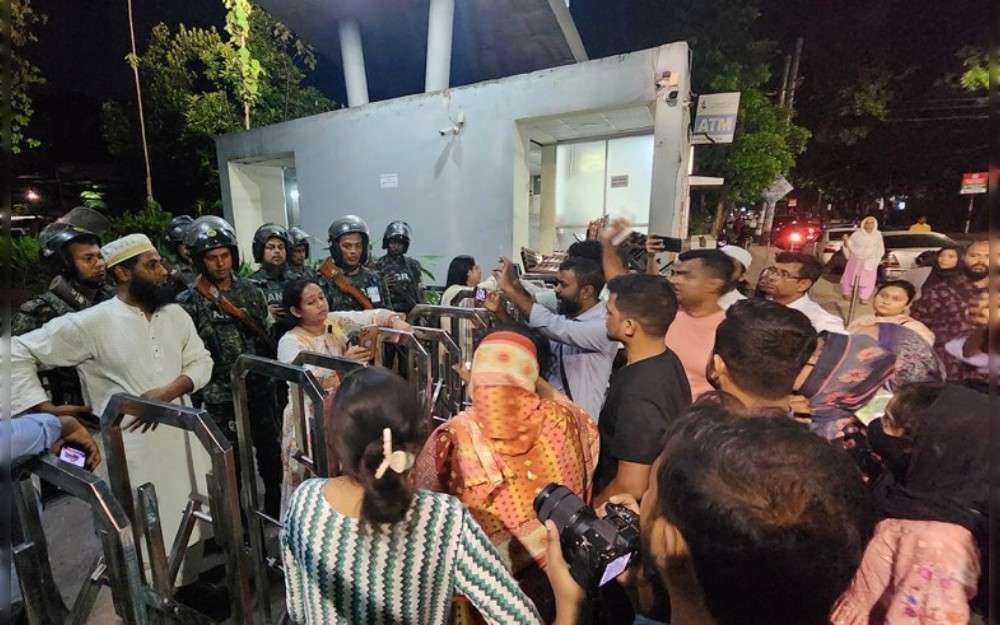Shailaja Neelakantan/Washington

Macabre killings, casual torture, misdirection and snooping were part of “the anatomy of enforced disappearances” linked to deposed Bangladesh Prime Minister Sheikh Hasina, an inquiry commission said in its first report.
The five-member commission learned about how forced disappearances were carried out based on accounts from surviving victims of such incidents – that is, those who resurfaced.
The commission, led by a retired Supreme Court judge, presented its report last weekend to Muhammad Yunus, the Nobel laureate who became Bangladesh’s interim leader days after Hasina fled to India on Aug. 5.
The commission also interviewed officers, the military and various security forces including the Rapid Action Battalion (RAB). The United States, which sanctioned RAB in December 2021, accused it of more than 600 forced disappearances over 12 years.
The commission has recommended RAB be disbanded.

A longtime human rights activist, Jyotirmoy Barua, said any claims by Hasina or her supporters that the commission’s members were politically motivated would not hold water.y
“The members of the commission are not directly or visibly politically connected – none have a political background,” he told BenarNews.
A Bangladeshi human rights lawyer, Sara Hossain, concurred. The commission head was known for his impartiality, and the other four members had long investigated human rights violations under governments led by both major political parties, she said.
Below are 10 shocking revelations from the commission’s report, which is based on its scrutiny of 758 forced disappearance cases:
1. The number of forced disappearance cases likely exceeds 3,500, the commission said. It received 1,678 registered complaints. Of the 758 people’s cases it has scrutinized so far, 204, or 27%, are still missing. “[T]he massive scale at which it was unleashed on the population during Sheikh Hasina’s regime is a novel phenomenon,” its report said.
2. Forced disappearances were not carried out by a few bad apples, the commission reported. The finesse with which each of the steps involved in a disappearance were carried out and how responsibilities were divided across agencies – and all over a span of 15 years – did not happen by accident, the report said. “[T]hese systems reflect a deliberate design orchestrated by a central command structure,” the report added.
3. With so many involved, how did the network remain undetected for a decade-and-a-half? That, too, was no accident, the commission found. “[S]security forces would … falsely attribute their actions to other agencies. … The forces would also exchange victims amongst themselves, with one force abducting, another incarcerating, the third one killing or releasing the victims,” the commission learned.
4. Even as they stayed undetected, the perpetrators could be brazen. The report said one victim of forced disappearance who was returned was even told that Hasina was giving him “a second chance,” but with conditions. “You must refrain from politics, leave the country, and return only when the situation improves,” he was told, the commission’s report said.
5. Abducting people without anyone around them noticing – known as “silent pick-ups” – was a vital part of forced disappearance operatives staying undetected. That was entirely impossible without electronic surveillance, according to the commission’s interviews with RAB and military officers.
6. Victims were detained for varying periods, ranging from 48-60 hours to several weeks or months, and in some cases, up to eight years. Some were mixed in with legal detainees and some were stashed in secret cells. The commission said it had identified more than eight secret detention facilities where victims were held across the country.
7. The remarkable consistency in forced disappearance practices across the country, included congruence in torture rituals, which were also “profoundly brutal and disturbingly methodical,” the commission report said. One victim described RAB sewing his lips shut without anesthetic – “akin to stitching cowhide.” Another recounted, RAB again, electrocuting his ears and genitals.
8. A forced disappearance case ended in one of two ways, the commission learned. The victim was killed or turned loose into the criminal justice system. For those the operatives decided to kill, they wanted to ensure the body would be difficult to identify. But RAB and other forces couldn’t resist making a sport of it. One survivor said a police officer pushed him onto a highway in front of a vehicle, which swerved away from him. The officer didn’t try again.
9. A victim turned loose into the criminal justice system may have had his or her life spared, but the perpetrators made sure they perversely destroyed that life. The captors filed a slew of cases against the victim in an attempt to justify the forced disappearance. This perpetuates “the sufferings of victims, who are forced to navigate a deeply flawed and punitive legal system for years afterwards,” the commission report said.
10. India’s Bharatiya Janata Party (BJP) government has since 2014, when it came to power, been Hasina’s steadfast supporter. Before that, India’s Congress government too favored a Hasina administration. Did this closeness also involve prisoner exchanges, including of Bangladeshi forced disappearance victims? The commission said it did, basing its assessment on two cases and interviews with soldiers deputed to RAB Intelligence.
Zia Chowdhury in Dhaka contributed to this report.
Copyright ©2015-2024, BenarNews. Used with the permission of BenarNews.















